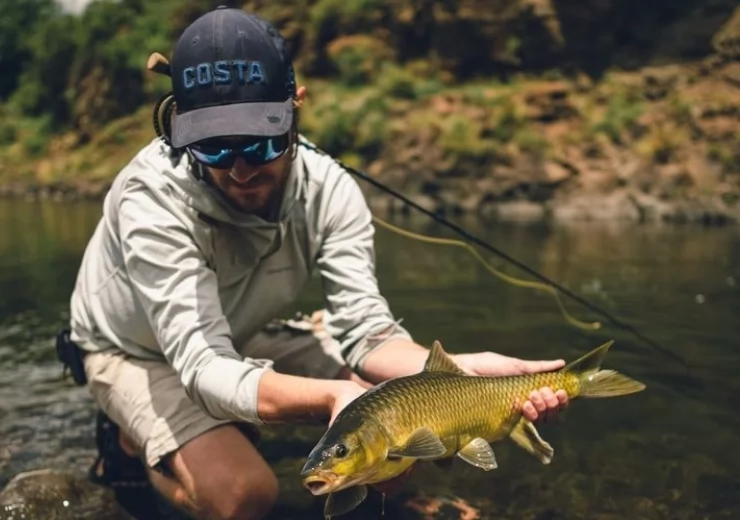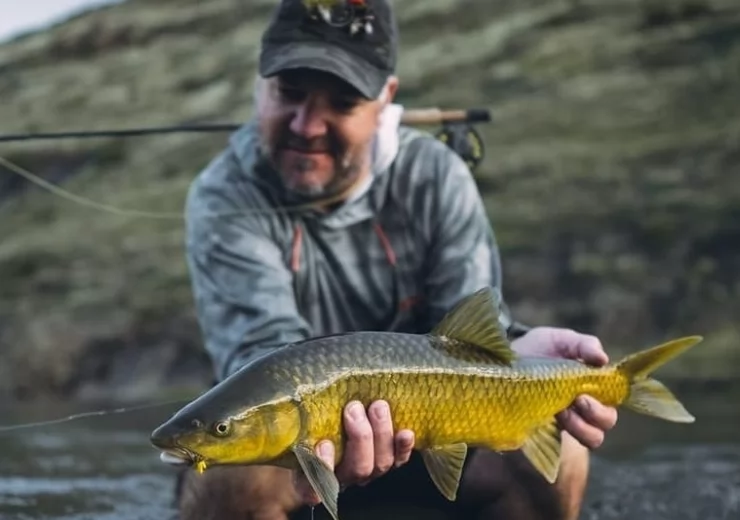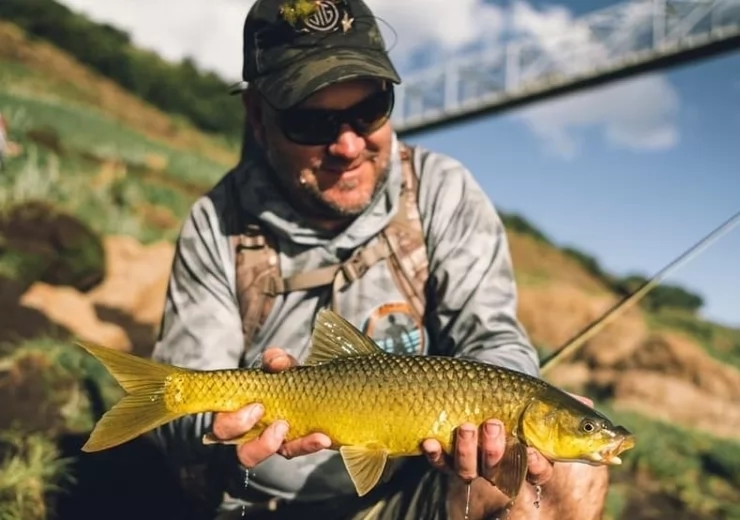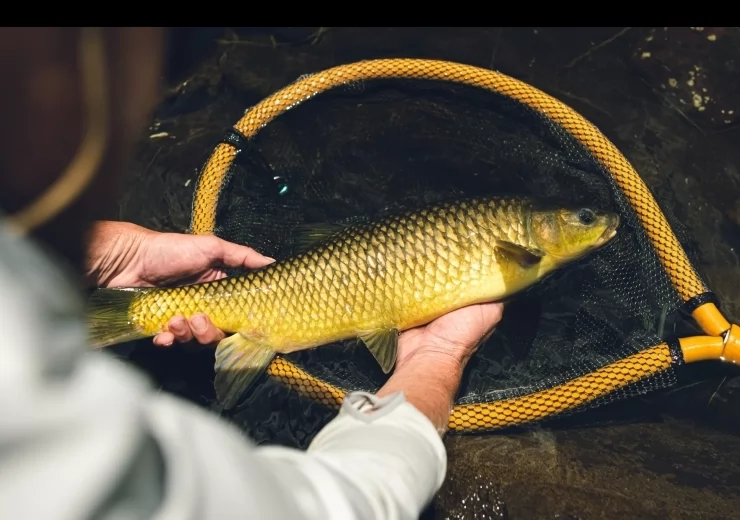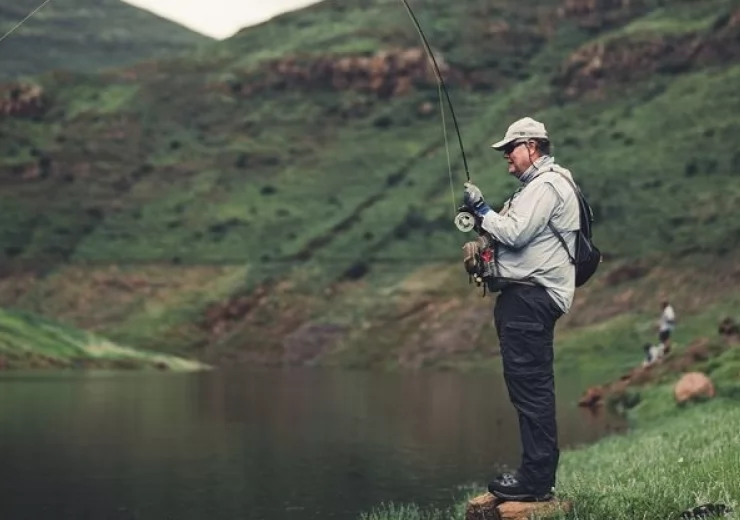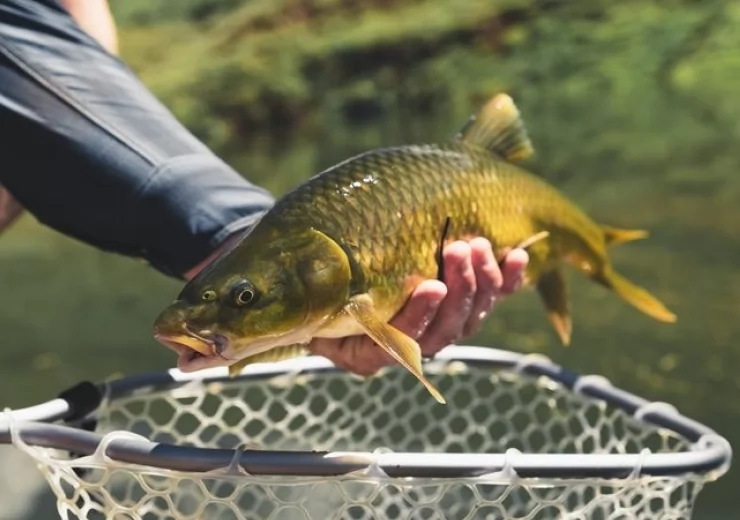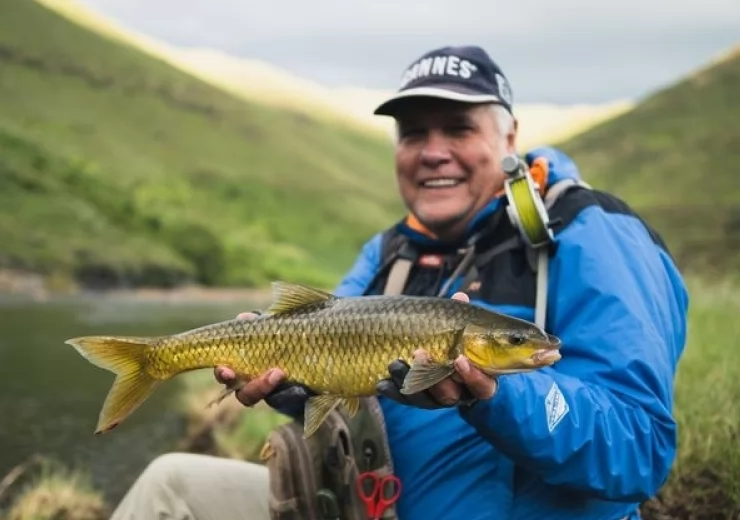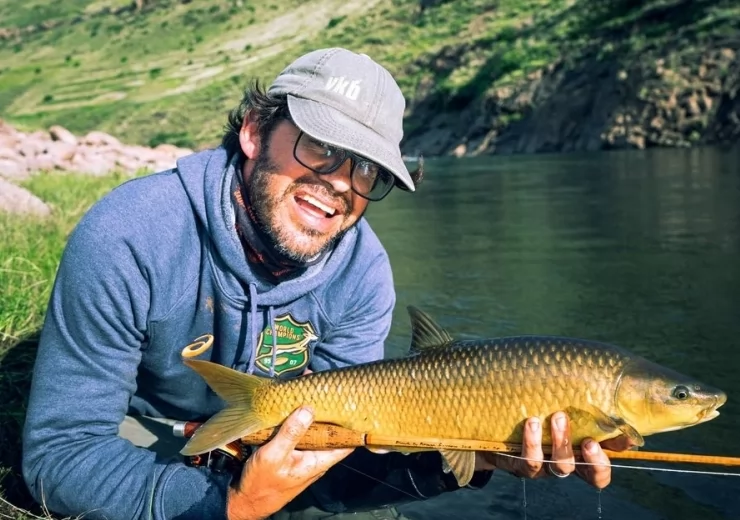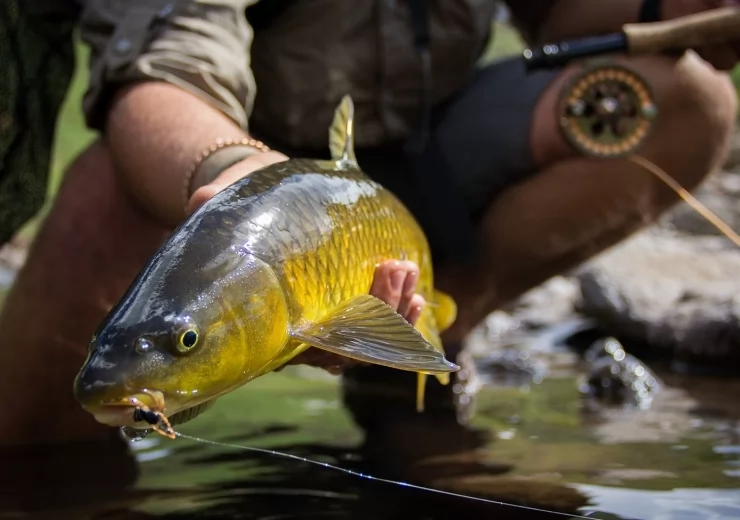INTRODUCTION
YELLOWFISH
The Smallmouth Yellowfish (Labeobarbus aeneus) is also known as the Vaal Orange Smallmouth Yellowfish, due to it’s range and where it occurs naturally.
The Smallmouth Yellowfish starts out as a small silver coloured fish, that grows up to be a large brightly coloured yellow and golden coloured species. They have many nicknames, and Gold is often a word used to describe them.
These fish are so beautiful, and are one of the strongest fighting fish in South Africa.
The Smallmouth Yellowfish on fly is arguably the most fished for freshwater fish species on fly in South Africa.
Many people wonder how to tell the difference between smallmouth and largemouth Yellowfish? This is a tough one.
Generally it is almost impossible to tell the difference between the two Yellowfish species when they are smaller. As they grow larger, the Largemouth Yellowfish becomes more distinct with it’s larger more upward pointing mouth.
The eyes on the Largemouth Yellowfish are also situated more towards the top of the head, compared to the Smallmouth Yellowfish where the eyes are more on the side of the head. You can see this by looking up at the fish, which is easier said than done. The adult Largemouth Yellowfish has a larger head and a more prolonged mouth area.

